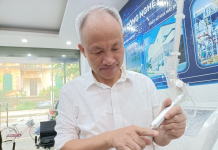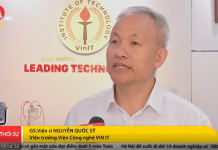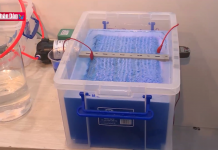Humans are machines for turning the world into waste—at least that’s how it seems. On average, every single person in the United States produces about 2kg (5lb) of trash per day, which adds to up three quarters of a ton, per person, each year! What are we to do with all this junk? Recycling is one option, but not everyone does it and there are lots of things (such as electronic circuit boards) made from multiple materials that cannot be easily broken down and turned into new things. That’s why much of our waste goes where it’s always gone, buried beneath the ground. But we’re running out of landfill space too—and that problem is bound to get worse. Another possibility is to incinerate waste, as though it were a fuel, and use it to produce energy, but incinerators are deeply unpopular with local communities because of the air pollution they can produce. A relatively new type of waste treatment called plasma arc recycling (sometimes referred to as “plasma recycling,” “plasma gasification,” “gas plasma waste treatment,” “plasma waste recycling,” and various other permutations of the words plasma, gas, arc, waste, and recycling) aims to change all this. It involves heating waste to super-high temperatures to produce gas that can be burned for energy and rocky solid waste that can be used for building. Supporters claim it’s a cleaner, greener form of waste treatment, but opponents argue it’s simply old-fashioned incineration dressed up in new clothes. What exactly does plasma recycling involve? Let’s take a closer look!

Plasma torches can create temperatures of over 10,000 degrees – enough to blast waste materials apart into their constituent atoms so they can be reassembled into less harmful materials.
What kind of waste do we make?
Waste we produce is relatively harmless paper, metal, plastic, and so on (blue), but about 20 percent of it is much more problematic (orange and yellow). This high-level waste is a mixture of hazardous material, incinerator ash, and a very tiny amount (less than 1 percent) medical waste.
Over three quarters of our trash is ordinary, relatively harmless household waste made up of paper, card, glass, plastics of various kinds, metals (mostly steel and aluminum), and food waste. In many countries, much of this is now separated and recycled or (in the case of food waste) composted or fed into an anerobic digester, although quite a lot still goes to landfill or incineration. Simple household waste aside, there’s quite a lot of other trash that can’t be treated so easily. For example, batteries and other toxic chemical waste, and medical waste from hospitals. And some conventional forms of waste treatment (recycling plants and incinerators) themselves generate waste products that have to be disposed of safely: things that cannot be recycled or highly toxic “bottom ash” from incinerators that needs to be disposed of somehow. Plasma recycling claims to be able to tackle all these kinds of waste safely and with little or no harm to the environment.

What is plasma arc recycling?
To answer that question, it helps to understand how plasma recycling differs from conventional incineration: simply tossing waste on a fire. Incineration makes use of the chemical reaction called combustion, in which fuel (in this case, household trash) burns with oxygen to release waste gases (typically carbon dioxide, steam, and various kinds of air pollution) and heat energy; a conventional energy-from-waste incinerator is really just a polite version of that. The main differences between a simple bonfire and a waste incineration plant are: 1) the waste is burned in a closed container at extremely high temperatures (to destroy as many toxic chemicals as possible); 2) pollution from the smokestack (chimney) may be trapped and “scrubbed” clean before it’s released (using an electrostatic smoke precipitator); 3) a very tall smokestack is used, (theoretically) to disperse any remaining pollution in the wind; and 4) the energy released by burning the waste is captured and used to boil water, drive a steam turbine, and generate electricity.

Artwork: Although plasma recycling processes vary, most work in broadly this way. Raw waste is processed to remove any recyclable materials before being fed, with gas, to the plasma arc. This vaporizes the waste to produce syngas (which has to be scrubbed clean) and aggregate.
Plasma arc recycling doesn’t involve combustion. Instead of simply burning the waste (at a few hundred degrees), the waste is heated to much higher temperatures (thousands of degrees) so it melts and then vaporizes. This is done by an electrical device known as a plasma arc, which is a kind of super-hot “torch” made by passing gas through an electrical spark. Think of the spark you get from the sparking plug in a car: electricity feeds into the plug from the battery, makes a lightning-like spark leap across a small air gap between two contacts, and the spark ignites the fuel that powers your engine. A plasma arc is a much bigger version of the same thing, with a gas (such as oxygen, nitrogen, or argon) blowing through it to create a kind of super-hot plasma torch (like a giant welding torch).

Artwork: How a simple plasma torch plant works. Waste enters through the gray hopper (labeled 31), where it’s compacted into small bales and freed of air by the green hydraulic ram (32), then pushed up the orange shute (36). Bales of waste are gradually pushed by the smaller green hydraulic rams (40, 46, 50) into the blue “reactor” until the orange photoelectric sensor (56) indicates the level is high enough. The red plasma torch (12) pivots around, converting the waste into useful syngas, which exits through the purple pipe on the right (64). Artwork from US Patent 5,634,414: Process for plasma pyrolysis and vitrification of municipal waste by Salvador L. Camacho, Solena Fuels Corp/Plasma Tech Corp, June 3, 1997, courtesy of US Patent and Trademark Office.
The plasma arc in a waste plant heats the waste to temperatures anywhere from about 1000–15,000°C (1800–27,000°F), but typically in the middle of that range, melting the waste and then turning it into vapor. Simple organic (carbon-based) materials cool back down into relatively clean gases; metals and other inorganic wastes fuse together and cool back into solids. In theory, you end up with two products: syngas (an energy-rich mixture of carbon monoxide and hydrogen) and a kind of rocky solid waste not unlike chunks of broken glass. The syngas can be piped away and burned to make energy (some of which can be used to fuel the plasma arc equipment), while the “vitrified” (glass-like) rocky solid can be used as aggregate (for roadbuilding and other construction). In practice, the syngas may be contaminated with toxic gases such as dioxins that have to be scrubbed out and disposed of somehow, while the rocky solid may also contain some contaminated material.
Where is plasma recycling being used?
Although plasma recycling is still relatively new, there’s a huge amount of interest in the technology, and plants are starting to appear all around the world. Here’s a small selection of what’s currently up and running:
Europe
One of the first European plasma plants was a small demonstration site built in Swindon, England, and operated by Advanced Plasma Power (APP) since 2007. According to APP, the plant has an amazingly low environmental impact: it’s the same size as a soccer pitch, looks much like an ordinary factory or warehouse, and has a modest smokestack (chimney) that rises only 10m (~33ft) above its roof (the smokestack on a typical incinerator would rise about 6–7 times higher). A full-scale plant built to a similar design could process 150,000 tonnes of ordinary household and commercial waste per year, diverting some 98 percent of waste that would otherwise end up in landfill. It would produce enough power for 17,500 homes and enough waste heat for 700. While it would be possible to build much bigger plants, it makes much more sense—politically, environmentally, and economically—to construct many small plants geared to local communities, removing their waste and producing power for them at the same time. Having proved that its process works, APP has since started work on a significantly bigger 6MW plasma plant in Birmingham, England. That’s roughly the same output as three wind turbines working at full tilt, but still only a tiny amount of power generation: you’d need about 300 plasma sites like this to make as much power as one big coal-fired power plant!
North America
US energy company InEnTec has been operating small-scale plasma plants for two decades, and now has sites in Washington state, Nevada and Oregon; it even has a tiny transportable plasma system that operates from the back of a couple of flatbed trucks. The United States Air Force (USAF) is also at the cutting edge of gas plasma technology, with a keen interest in reducing the waste it generates in war zones. It’s been operating a prototype gas plasma plant at Hurlburt Field Air Force base in Florida for the last few years.
British-based APP won a contract to build a 20MW gas plasma plant for Port Fuels and Materials Services in Hamilton, Ontario, Canada in 2014, which they estimate would provide enough energy to power 17,000 homes. Plasco (of Ottawa) and Ze-Gen (of Boston) invested heavily in plasma technologies but suffered setbacks when they tried to commercialize them. Plasco ran into serious financial difficulties, while Ze-Gen met stiff environmental opposition to a proposed plasma plant in Attleboro, Mass.
Asia
There are probably more plasma plants in Asia than anywhere else in the world. InEnTec has sold plants to Taiwan, Japan, and Malaysia, for example. In China, the Wuhan Kaidi company has been operating a prototype plant since 2013, using plasma technology supplied by US firm Westinghouse Plasma and AlterNRG, a Canadian plasma firm that has also built a plant in Shanghai. AlterNRG has also helped to build plants at Pune, India and both Mihama-Mikata and Utashinai in Japan.
Chris Woodford. February 12, 2019.














